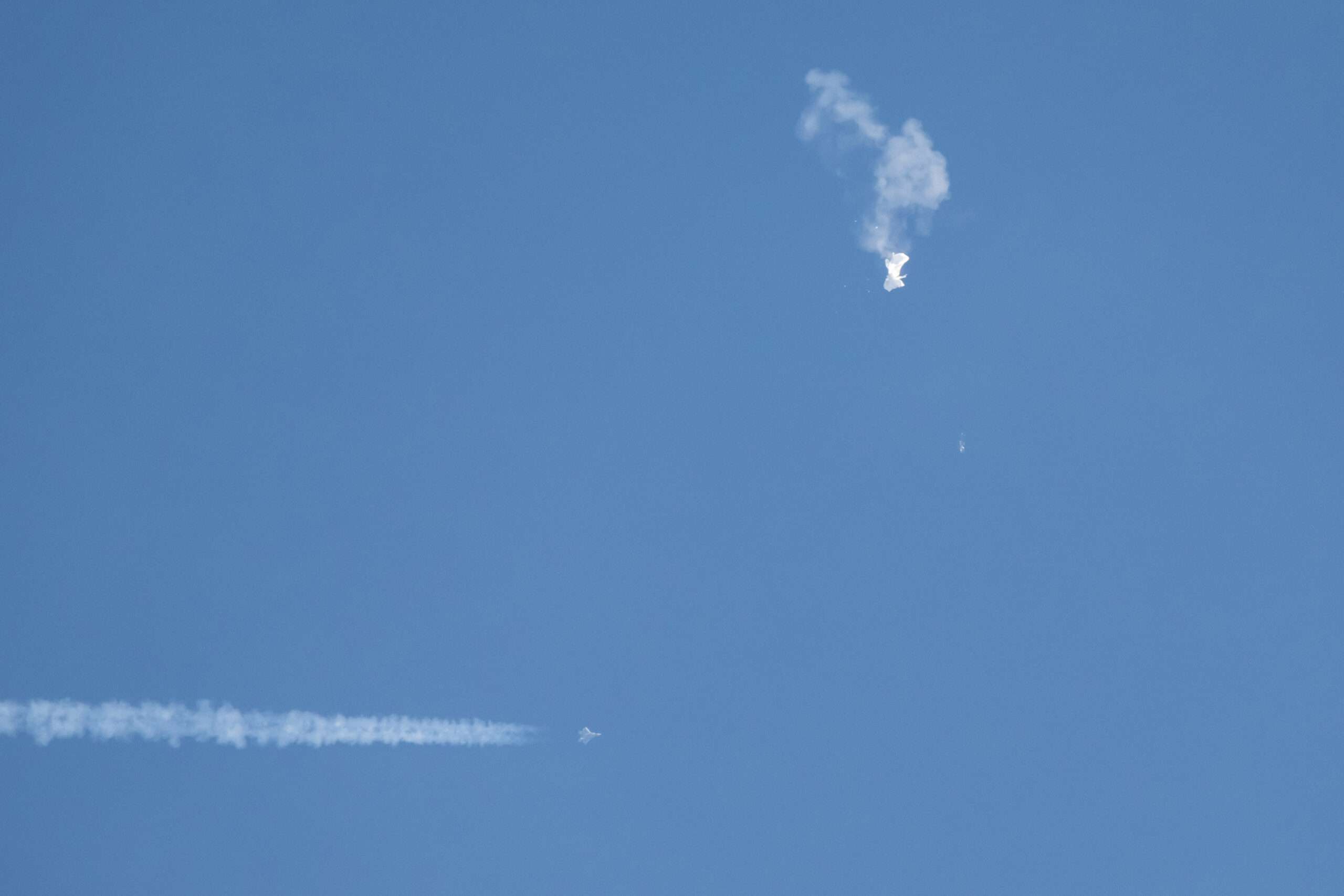When it officially entered military service in 2005, the US Air Force hailed the F-22 Raptor as an “exponential leap in combat capability”.
American taxpayers ultimately paid $67 billion to buy 187 planes, which since 1986 have been “air dominant, fast and at great range” projecting technological capabilities that are “unmatched by any known or projected fighter aircraft.”
On Saturday, the F-22 scored its first victory against an airborne opponent when it shot down a balloon.
There can be no better metaphor for the costly grandeur of the American military than the use of multi-million dollar warplanes to dispatch an unarmed, invincible adversary. But the fact that the F-22 never won the dogfight before the decisive victory over what may or may not have been China’s spy balloon is a perfect illustration of why the US has the world’s most expensive military by a wide margin.
In short, it’s because the Pentagon buys a lot of expensive toys that have no use.
The F-22 never had a clear purpose. When some Republicans in Congress tried to cut funding for the new stealth fighter in 1999 (before Republicans sometimes did this sort of thing), a Brookings Institution report noted that American aircraft superiority was already assured. Older fighters dominated the skies during Desert Storm and the Kosovo conflict, and no other country came close to closing the gap.
Michael E. in the Brookings report. O’Hanlon wrote, “The Air Force’s intent to replace virtually its entire stock of current fighters with next-generation aircraft at more than twice the price reflects Cold War practice.” “With other nations unlikely to acquire such advanced aircraft, and major advances in capability by improving the munitions and sensors of existing U.S. fighters, these planes are redundant in the numbers now proposed.”
The next few decades vindicated that caution. The wars in Afghanistan and Iraq did not require air-to-air combat against superior adversaries. By 2004, a year before the F-22 officially entered combat service, the Pentagon scaled back plans to buy more than 300 of them. Two years after that, the Government Accountability Office reported that the Air Force had not demonstrated the “need or value” of buying additional F-22s. The same report noted somewhat ironically that the fighter was designed to “counter the threat from the Soviet Union,” which must have been a decade and a half away.
In 2008, then-Defense Secretary Robert Gates clearly stated that the F-22 had no place in the wars in Afghanistan and Iraq.
“The purpose of the F-22 was to ensure that the Joint Force could reasonably assert air superiority in this war. Trying to link it to terrorists planning attacks from remote caves in Afghanistan is irresponsible at best,” wrote Maj. Mike Benitez, an Air Force combat pilot, for 2016 post Battle of the Rocks. He summarized the F-22 as “built on 1980s requirements, built with 1990s technology, and designed to counter dated threats with dated tactics.”
The Pentagon is always fighting the last war, and American taxpayers were put on the hook for the F-22 far longer than they should have been. Now, we’re paying for its replacement—the much-maligned F-35 fighter—despite major advances in drone technology that could make the fighter jets even more obsolete in the coming decades than they were two years ago.
But hey, maybe someday the F-35 will be called upon to protect the nation from deadly threats. Like a kite or hang glider.

